STUDENTS PROJECTS
PROJECTS2013
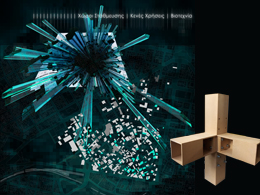
06 March, 2015
Multiplying the ''Joint''
Equipment for industrialized operations. The case of Psirri.
Students: Zilakou Marietta, Konstantinidis Dimitris, Stratis Papastratis
Supervisors: Moraitis Konstantinos , Vasilatos Panagiotis
Assistants: Vaiou Ntina, Papaioannou Maria, Rossis Nikos
School of Architecture. N.T.U.A
Presentation date : 31 July 2014
This Thesis discusses and examines the design of a modifying, transportable and upwards developing steel structure within its space.
Goals of the structure:
The establishment of seated non-founded spaces (closed or semi-open) for the accommodation of light industry, temporary housing, educational spaces, cultural activities etc.
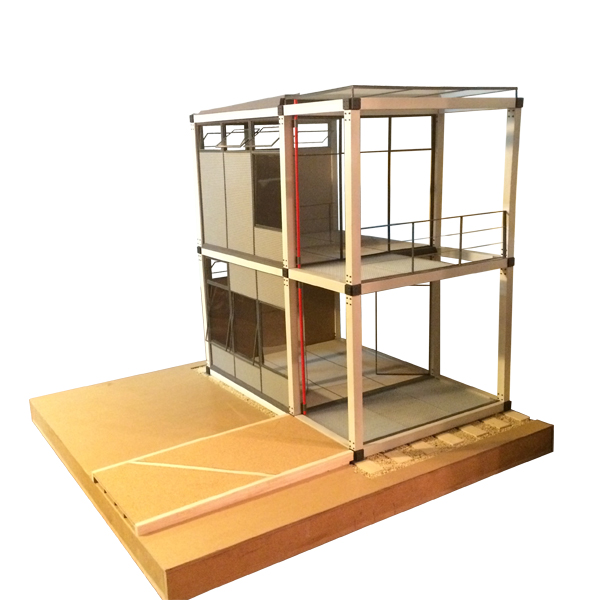
Main structural features:
- Spaces can be multiplied with the use of 4x4 grids
- Foundations are not required
- Can be assembled and disassembled within a sort time span by non-experienced staff
- Transportable by smaller vehicles
- Filling of walls and floor slabs is comprised in three sections for easier transportation of the whole structure
- Can be transported to inaccessible - of dense urban arrangement areas
- Meets thermal insulation and waterproofing requirements
- Does not leave traces after its disassembly and relocation
- Comprises of 10 structural parts
- The arrangement of its main structural elements allows for easy assembly without welding, only with bolted parts
- Its facades are formed through walling panels of varying permeability creating an interesting morphological complex
- The steel cube acts as a connecting element between the architectural parts (beam - column)
- The structure is comprised of the indoor and open space
- The structure is indicatively placed in the area of Psirri

Its basic features make it suitable for its placement in the area of Psirri
- Helical web
- Area of possible archaeological findings
- High land segmentation to various owners
- Former light industry center
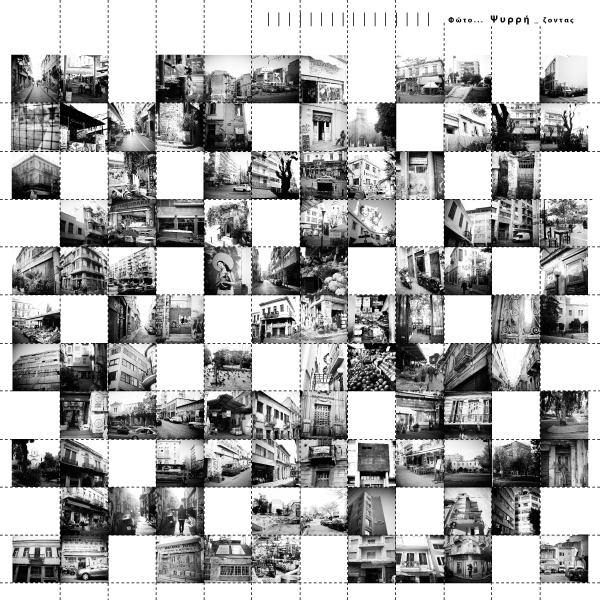
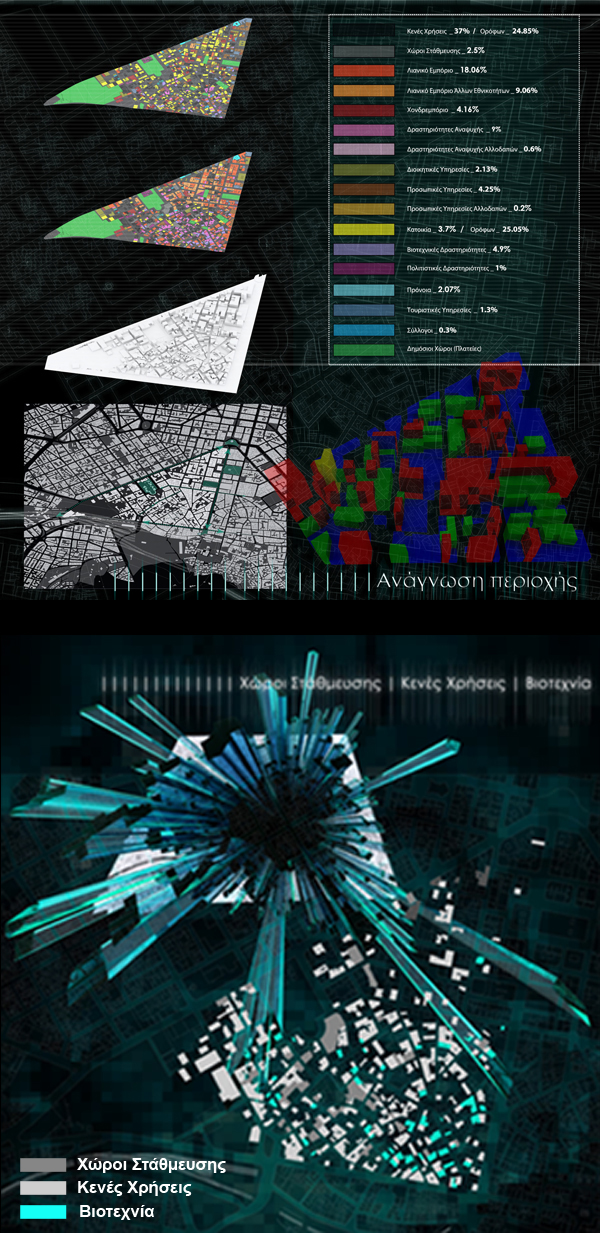
The structures are placed in certain unoccupied lots within the Psirri area forming a network of industrial activity. An additional urban planning proposal is submitted discussing an improved network and the integration of the three sub-regions that comprise the area of Psirri.
Urban Development proposal
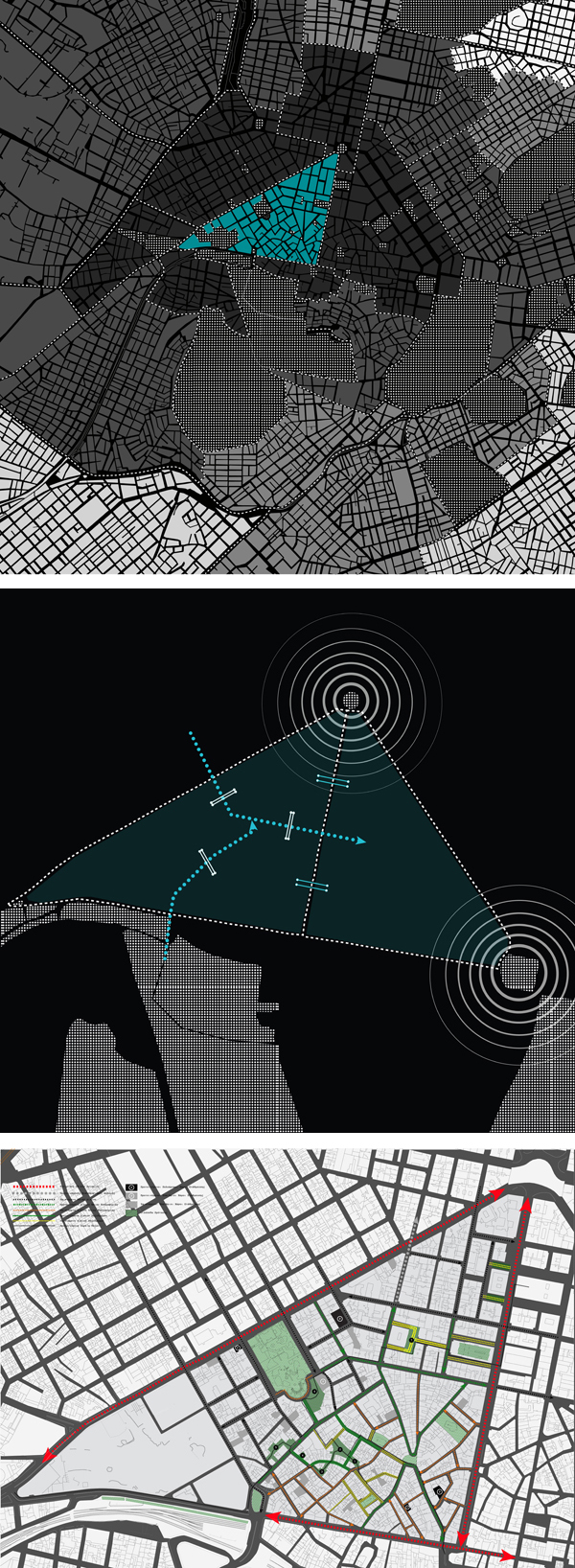
Observing and identifying the three sections within the area of Psirri the urban planning goal was their homogenization and the general upgrade of the area.
The existing local roads work in conjunction with the proposed ones creating a new road network for the area of Psirri. The pedestrian roads are enriched creating a pleasant environment for the pedestrian to explore Psirri.
The selection of the roads that will function as pedestrian only is not unplanned since these particular roads boarder with empty lots that are at the moment used as parking spaces.
Within these lots our structures will be placed, housing small-scale industries and therefore reestablishing the areas lost identity as a craft and small-scale industry pole.
Within these spaces small-scale industries that have departed from the area due to former strategies, will be accommodated and even local craftsmen that are already located in Psirri and wish to promote their products for some days of the week.
This way and through the passing time, we will determine the degree in which our structural experiment is verified. When our structural "catalyst" is in effect the structures are disassembled to be replaced by permanent structures for the uses that the area has dictated.
New multi-storey spaced are created in order to receive the load of cars from the used lots.
Integrated Solution for the Lots
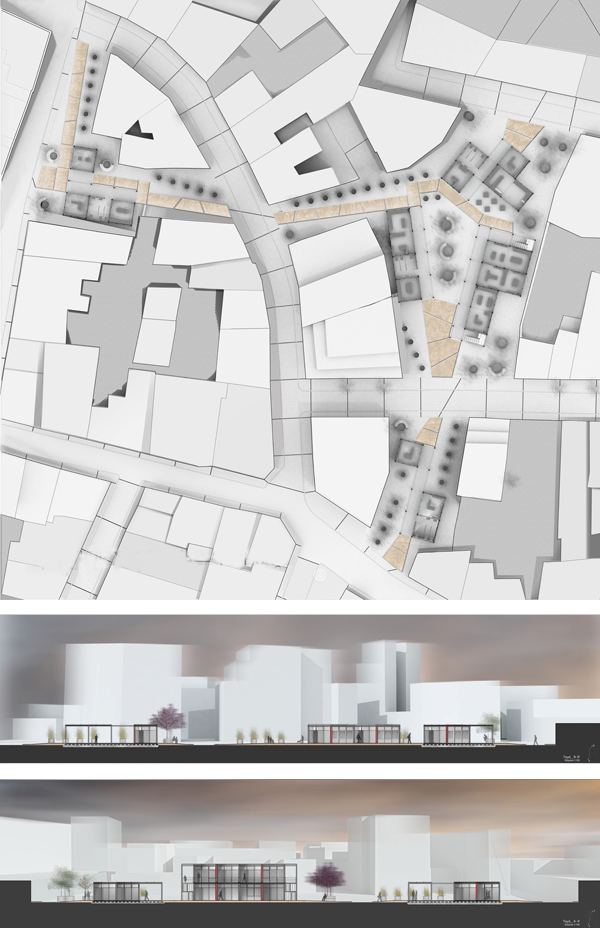
Having established the lots that our structures will be placed, we focus on the ones that are in direct contact and provide a clear picture of our final endeavor, the creation of an industrial network - flea market within Psirri.
Moving through the lots is enabled through a route of stabilizers that are placed as a continuation of the structures. This particular material meets the non -permanent limitations that have been established.
The moment the structures would need to be disassembled and transferred to an other area, the same can apply for transportation since the initial form can be altered and through special process be brought back to the required form.
During transportation halfway joints are created to enable easier repair and moving.
In the main lot the structure is assembled with its sides parallel to the ones of the lot creating an internal plateau that can be related as the piazza.
Structures are divided between single and double spaced depending on each industries' requirements.
Internal furniture arrangement is indicative since the final arrangement is determined based on the requirements of the housed industry.
Selection of Plantation
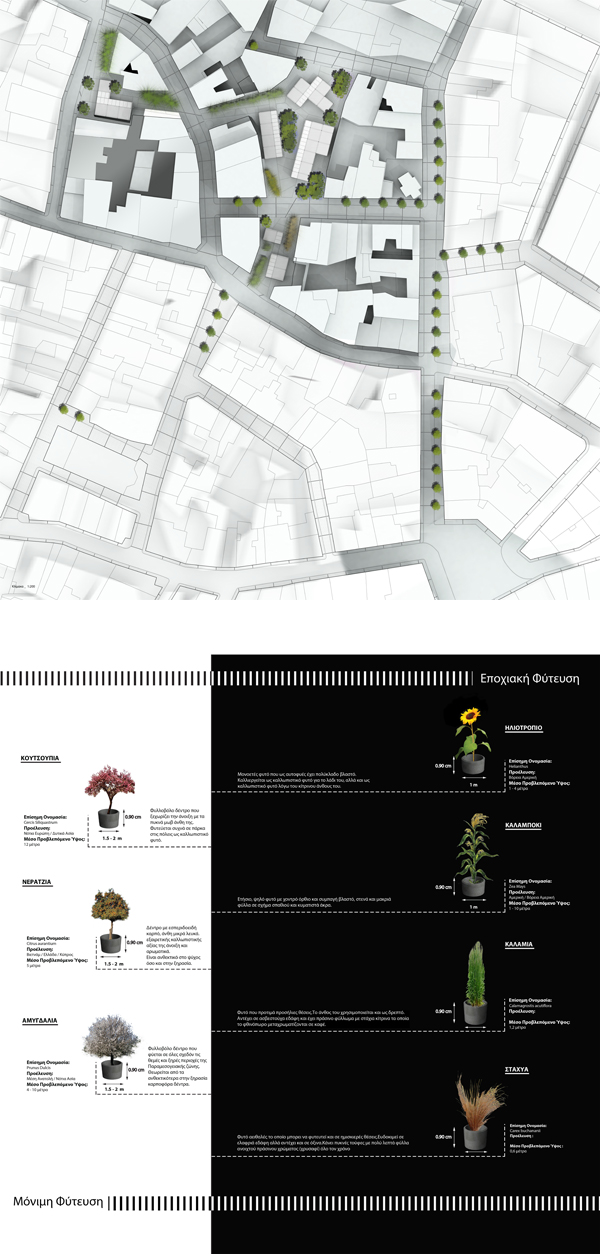
Plantation was selected based on the initial idea of semi-permanence.
The plantation is therefore composed of seasonal plants emphasising the non-permanent nature of the structure.
The limits of the urban fabric are permanently planted defining the space within which the structure is placed.
Plants are fitted within cement rings, allowing for their removal without leaving traces.
Along the route and at the narrow entrances of the lots seasonal plantation is selected such as cobs, reed, wheat and corn. The aim is to highlight linear movement and the non-permanent nature of the proposal. In the meantime this plantation adds an element of theatricality from the movement of the plants in the wind.
Related articles:
- Theaterhaus Jena Inflatable Pavilion ( 25 September, 2009 )
- The Wall paper house offers cheap dry home for poor and displaced ( 10 February, 2009 )
- Norway-Powered by Nature ( 26 September, 2011 )
- Transportable unit of medical support for central Africa ( 02 February, 2011 )
- Beehive housing ( 30 October, 2010 )
- Container (s) ( 17 April, 2012 )
- Time-Bank Local Complex ( 04 March, 2013 )
- Urban Camping. Athens ( 28 April, 2013 )
- b84 ( 15 October, 2013 )
- TV ( 22 January, 2014 )
- Designing for the homeless ( 26 March, 2015 )
- T.E.F.K. House ( 30 March, 2015 )










